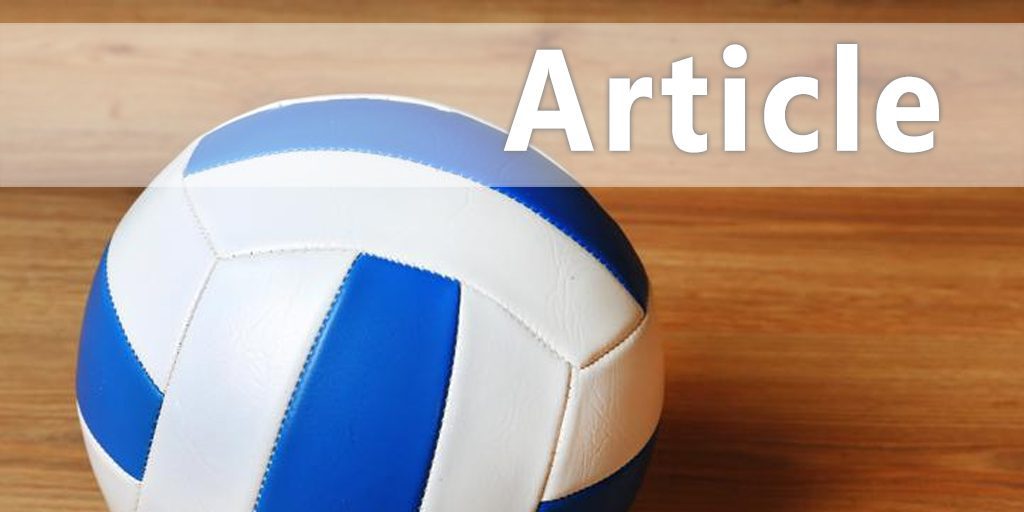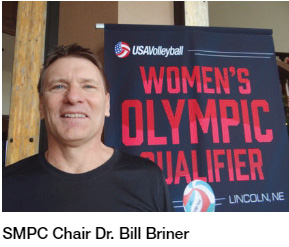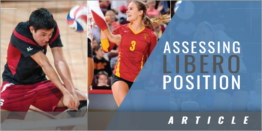| Overuse Injury in Volleyball - A New Approach |
| By: Ken Kontor
Originally Published in: Coaching Volleyball Provided by: AVCA
One solution is playing multiple sports to diminish overuse, as Dr. Briner describes it: "There are some data out there that successful collegiate athletes tended to play multiple sports in high school. Athletes playing three sports in high school are more likely to win scholarships than if they only play one." The problem is that the club culture in volleyball just doesn't allow for the multi-sport solution. Another problem is that current strength and coaching practices are actually adding to the injury situation. After being involved as executive director and journal editor of the National Strength and Conditioning Association at its inception in 1978, I couldn't believe what I was hearing. A collegiate strength coach admitted that freshman athletes entering collegiate sports lack basic movement skills. The causes: improper strength training techniques, early movement compensation due to poor posture among other issues and improper resistance loading. It's a basic breakdown in the strength and conditioning process. We're to the point where movement skills of incoming collegiate freshman athletes have to be screened and corrected before weight training even begins. This movement training before lifting has also been adapted by several Major League Baseball minor league strength and conditioning programs. This is being reported in articles from our sister publication, Performance Conditioning Baseball/Softball.
A Possible Solution - Movement to Muscle At the SMPC meeting in December, an agenda item was approved by the com-mission presented by me and Lisa Bartels to explore a club program that would em-power coaches to evaluate their athletes' movements and provide them with training guidelines to correct movement problems before weight or resistance training is introduced. This program would provide the clubs a time during the off-season to develop athletically as part of the club's day-to-day operations and management. Mission Statement: To create, promote and integrate an off-season strength and conditioning program to advance the physical development and the prevention of injury of club volleyball players. This mission is to be accomplished through a comprehensive strength and conditioning program and will become part of the culture of club volleyball. Procedures: Ideally, the Movement to Muscle program will consist of an approximately six-week period of dedicated offseason volleyball strength and conditioning training. This training would begin with movement training. Athletes would have to demonstrate movement competencies before strength training could be introduced. These competencies would be determined through movement testing. Once movement tests are past, muscle training would be introduced and done by the athletes progressing at their own individual rate. In addition to movement tests, volleyball-specific field tests would be done. Athlete incentives would be based on two levels: first, achieving a passing grade of movement skills and second, percentage of improvement of volleyball-specific field tests based on individual results. Awards to athletes would be given at both levels. Cultural integration could occur as clubs generate revenue from the training and competitions.
Comments? Drop me a note at condpress@aol.com |




 "At the junior level, one of the issues that is getting a fair amount of research in the pediatric area is early sport specialization. It is becoming clear that early specialization forces the athlete to do the same motion over and over again - more repetition than maybe the body was meant to take. This leads to overuse injuries. It has been documented that girls are prone to get more stress fractures than their male counterparts. I think we lose kids not only from physical overuse, but also psychological overuse. Volleyball becomes their identity. Then they have a poor experience with a coach or at a couple of tournaments and decide it's not the sport for them. We lose good volleyball players, who have not had the chance to fully develop physically, prior to starting long practices, with large numbers of jumps and landings."
"At the junior level, one of the issues that is getting a fair amount of research in the pediatric area is early sport specialization. It is becoming clear that early specialization forces the athlete to do the same motion over and over again - more repetition than maybe the body was meant to take. This leads to overuse injuries. It has been documented that girls are prone to get more stress fractures than their male counterparts. I think we lose kids not only from physical overuse, but also psychological overuse. Volleyball becomes their identity. Then they have a poor experience with a coach or at a couple of tournaments and decide it's not the sport for them. We lose good volleyball players, who have not had the chance to fully develop physically, prior to starting long practices, with large numbers of jumps and landings."
 This project is in the development phase but initial reaction to it has been very positive, enough to start a pilot project to explore its practicality.
This project is in the development phase but initial reaction to it has been very positive, enough to start a pilot project to explore its practicality.


